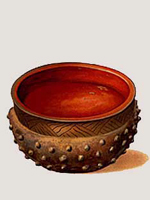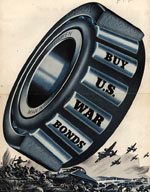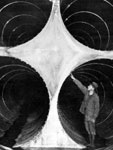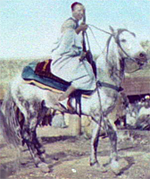The topic of how video games have evolved over the years is massive. There have been millions of games created in the 50 years since creation of 1962’s Spacewar!, the first true video game. So the best way to approach this topic briefly is to select a genre and survey the main trends. This essay will focus on games in the adventure/roleplaying genre in which players take the role of one or more heroes on a quest of some sort.
The earliest adventure video games were, in a sense, not video at all. Instead they used text to create worlds for the player to explore. The first of these was Adventure, designed by Will Crowther and enhanced by Don Woods. The player read text descriptions of a cave and typed in simple noun-verb commands (“go north” “take lantern”, etc.) to navigate through the cave and interact with its denizens. Text-based games worked around the limited RAM (random-access memory) in early computers by focusing on story and setting at the expense of graphics.
The earliest adventure video games were, in a sense, not video at all.
A major evolution in the adventure genre (or step back, as text-game purists might claim) was the translation of the text-adventure to a visual format. In 1980 the Atari 2600 released its own Adventure. Adventure included the exploration, loot gathering, and simple monster fighting of the early text adventures. Given the limitations on computer processing power, however, the main character had to be represented as a colored square. Objects and monsters, swords and dragons, were all represented by crude pixelated graphics. Still, the use of a joystick and a visual environment gave players the ability to explore more widely and in real time rather than in the turn-based format of text adventures.
[New games] took advantage of gaming hardware’s increasing capabilities.
With the advent of computers and consoles that could render video, adventure games, and all other video games, began to develop in similar ways. First, they took advantage of gaming hardware’s increasing capabilities. The Atari 2600 had no hard drive to store programs, virtually no RAM, and ROM (read-only memory) game cartridges with only two to four kilobytes of memory. Graphics could only be displayed at a resolution of approximately 160 by 228 pixels in 128 colors. Modern PCs have hard drives measuring in gigabytes, onboard RAM averaging four gigabytes (one gigabyte is approximately a trillion kilobytes). Perhaps more important, modern gaming PCs have dedicated chips for rendering video, allowing for graphics verging on photorealism.
Second, controllers gradually developed into the modern forms. The classic Atari joystick had a directional control and a single button. The NES (Nintendo Entertainment System) controller had a four-way directional pad and two buttons: more inputs meant potentially more actions one could take in a game. Current consoles such as the Xbox 360 and Playstation 3 have controllers with a directional pad, one or more thumb-sized joysticks, and a series of triggers and buttons that can be combined to create a large number of different player inputs. In the PC gaming realm, the development of the mouse and keyboard combination allowed for an even greater number of player inputs.
Players of the adventure genre came to demand more sophisticated stories and moral choices.
These and other changes affected adventure games in unique ways, as well. The original text and Atari Adventure games had bare-bones stories. As the art of game design developed and the representational abilities of computers increased, players of the adventure genre came to demand more sophisticated stories and moral choices.
One of the better-known games to focus on moral elements was Bioware’s Star Wars-based roleplaying game (or RPG, a hybrid of adventure and combat games) Knights of the Old Republic. In this game players could choose to follow the “light” or “dark” side by making choices that helped or hurt in-game characters. In contrast, Bethesda’s popular Elder Scrolls RPG series, the most recent of which is Skyrim, focused on consequences to actions rather than an overarching morality system. The game’s designers created a sandbox-like environment where players could even avoid the main story altogether and focus instead on exploring the simulated world.
Video game history has not been a straight line towards larger, more complicated, more graphics-heavy games.
However, video game history has not been a straight line towards larger, more complicated, more graphics-heavy games. Text-based adventure games have not disappeared. For instance, the company Infocom developed and released text-based adventures throughout the 1980s. They actively compared their games to the crude graphics available on consoles and computers at the time: “We draw our graphics from the limitless imagery of your imagination—a technology so powerful that it makes any picture that’s ever come out of a screen look like graffiti in comparison.” When commercial sales of text-based adventures trailed off in the 1990s, fans of the format began developing text-based games themselves and distributing them for free.









